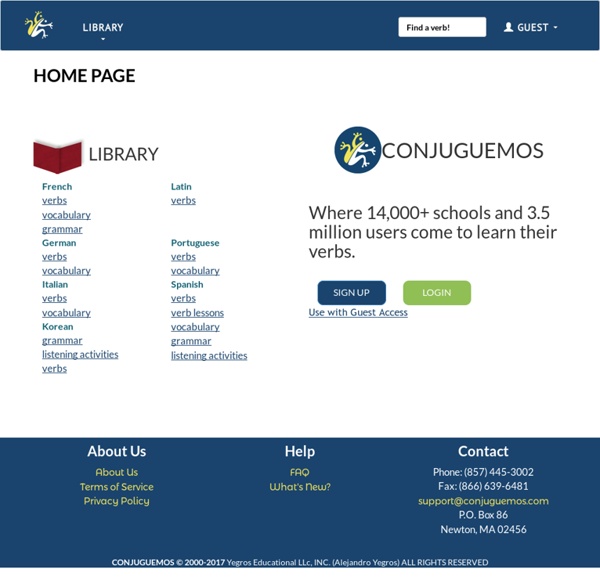Learn Spanish, French, Italian, Portuguese, Latin, and German

Activités pour enfants : activités manuelles et ressources pédagogiques - Momes.net - Momes.net
QUAD9
Le magazine QUAD9 est maintenant offert en format numérique! QUAD9 est un magazine pour ados traitant de sujets de l’heure. Les jeunes y reconnaîtront des visages et des lieux familiers, et y trouveront plein d’activités intéressantes. Plusieurs ressources l’accompagnent, tels un site Web, comprenant une foule d’activités complémentaires, et des feuillets d’animation de la lecture. Ressources complémentaires gratuites : Suggestions d’activités d’animation de la lecture (format PDF) Adobe Reader est requis. Pour voir des extraits ou pour commander Pour vous abonner
Vikidia
Calcul mental
Règle du jeu : 1. Calculer le plus vite possible Place-toi sur la case départ. Arrête le chronomètre et regarde combien de temps tu as mis pour finir le jeu. 2. Choisis un temps. Regarde où tu as réussi à arriver dans le temps donne (aide-toi des animaux repères). Utilisation : Après quelques parties de Bondi'math, je propose aux élèves de voir s'ils réussissent à calculer très vite des opérations relevant de la même compétence. Ensuite je propose aux élèves cette activité pour les devoirs. Quand les élèves maîtrisent bien la compétences, je leur remets un exemplaire de Bondi'math pour effectuer des révisions avec leurs parents avec l'un ou l'autre des jeux.
Related:
Related:



